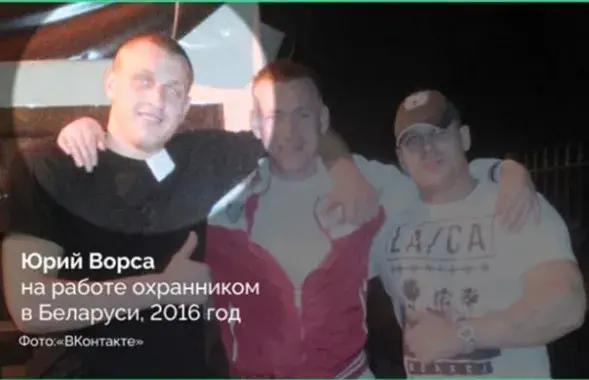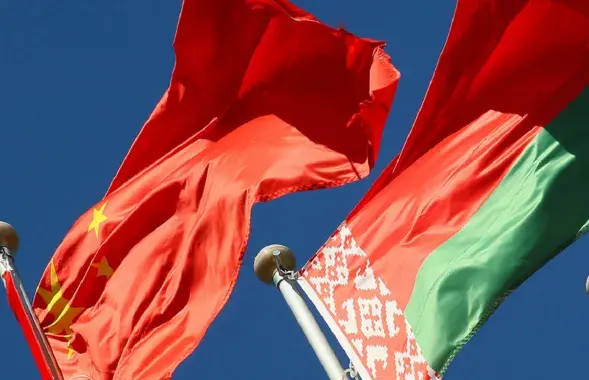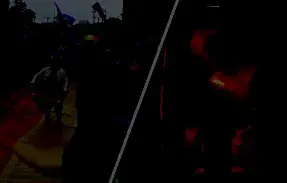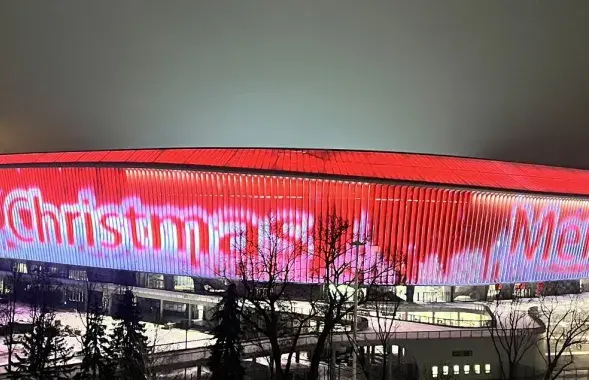Belarusian count’s photos found in Paris flea market (Photo)
Benedict Tyshkevich pretends to be a karateist and spies on girls in bed in 19th century photos. The exposition is unique because it is a miracle that photos dating back to the end of the 19th century have been preserved – employees of a French museum bought them from a Parisian antiquarian accidentally. It is the third time the exposition is opened in the last 15 years – the first time was in France in 1994 and then in Lithuania in 2000. Now the 86 photos have finally returned home.
The old well-preserved photos depict Belarusian villagers and their way of life. Here is a man taking on water from a river and here is a woman carrying it home in a basin on top of her head. A guy and a girl sitting on a fallen tree, their legs dangling in the air, talking about something affectionately. A laundress doing the washing with her hardened hands in a trough.
Here is Benedict Tyshkevich standing like a judoist with his leg up and drinking wine from a bottle. All the photos were taken in Tyshkevich’s manor Vyalava near Valozhyn. The building has been preserved but it is ruined like many other Belarusian monuments. The count’s photos have been preserved better – all the 86 photos are kept in a French city Chalon-sur-Saône in the museum of the inventor of photography Nicéphore Niepce. The deputy director of the museum Mme Cristelle Rochet has brought the exposition to Minsk. Mme Rochet said at its opening:
Cristelle Rochet: “It was a rare case in the 19th century when a rich noble man paid attention to villagers’ way of life. Count Tyshkevich’s photos testify that he was a man of considerable culture”.
The French Embassy to Belarus has helped organize the exposition. A Belarusian civil association “Photo Art” has also assisted it. The deputy head Ivan Pyatrovich noted at the opening ceremony that Tyshkevich’s photos were not only highly artistic but also technically precise.
Ivan Pyatrovich: “His laboratory was situated in Vyalava, the building has been preserved but it is ruined. The pavilion was built especially for photo activities. Technologies of that time required a lot of light for taking pictures. Photos had to be taken in the open air or in well illuminated rooms. That is why it seems one could enter the building in a carriage when you look at it!.. In reality, those were windows made for better illumination”.
In general, Benedict Tyshkevich can be compared to Napoleon Orda when it comes to their contribution to our culture. Orda made about 250 drawings of Belarusian architecture which helps us imagine what our country looked like 150 years ago. Thanks to Tyshkevich we know what Belarusians of the time were like. A Master of Arts Syarhei Hareuski notes that some contemporaries have to study Tyshkevich’s experience.
Syarhei Hareuski: “Looking at the types of Belarusian villagers you become unwittingly proud: there are no plicas, no ignorance!.. I believe cultural scientists and historians will find something to think about. It is live history – it has not be re-written, distorted or idealised...”
The exposition of Benedict Tyshkevich’s photos will continue in the National Historical Museum till October 29.
Benedict Tyshkevich, self-portrait, Vyalava, 1893
Farm kitchen, Vyalava, September 1897
Mr. Urbaniki dressed as a clown, Vyalava, August 1891
Benedict Tyshkevich and his daughter Elżbieta, Vyalava, 1893
Villager, Vyalava, September 1893
Village woman, Vyalava, September 1890
Village woman, Vyalava, September 1890
Laundress, Vyalava, July 1897
Water carrier, Vyalava, August 1897
Grisetta’s interior, no date
Benedict Tyshkevich, self-portrait as a hunter, Vyalava, 1893
Deputy head of Nicéphore Niepce Museum Mme Cristelle Rochet (on the left) and a representative of the French Embassy to Belarus Ms. Ina Matsiyenka
Mr. Ivan Pyatrovich
Opening of the exposition
French Embassy treats guests to French wine and entertains them to French music
The old well-preserved photos depict Belarusian villagers and their way of life. Here is a man taking on water from a river and here is a woman carrying it home in a basin on top of her head. A guy and a girl sitting on a fallen tree, their legs dangling in the air, talking about something affectionately. A laundress doing the washing with her hardened hands in a trough.
Here is Benedict Tyshkevich standing like a judoist with his leg up and drinking wine from a bottle. All the photos were taken in Tyshkevich’s manor Vyalava near Valozhyn. The building has been preserved but it is ruined like many other Belarusian monuments. The count’s photos have been preserved better – all the 86 photos are kept in a French city Chalon-sur-Saône in the museum of the inventor of photography Nicéphore Niepce. The deputy director of the museum Mme Cristelle Rochet has brought the exposition to Minsk. Mme Rochet said at its opening:
Cristelle Rochet: “It was a rare case in the 19th century when a rich noble man paid attention to villagers’ way of life. Count Tyshkevich’s photos testify that he was a man of considerable culture”.
The French Embassy to Belarus has helped organize the exposition. A Belarusian civil association “Photo Art” has also assisted it. The deputy head Ivan Pyatrovich noted at the opening ceremony that Tyshkevich’s photos were not only highly artistic but also technically precise.
Ivan Pyatrovich: “His laboratory was situated in Vyalava, the building has been preserved but it is ruined. The pavilion was built especially for photo activities. Technologies of that time required a lot of light for taking pictures. Photos had to be taken in the open air or in well illuminated rooms. That is why it seems one could enter the building in a carriage when you look at it!.. In reality, those were windows made for better illumination”.
In general, Benedict Tyshkevich can be compared to Napoleon Orda when it comes to their contribution to our culture. Orda made about 250 drawings of Belarusian architecture which helps us imagine what our country looked like 150 years ago. Thanks to Tyshkevich we know what Belarusians of the time were like. A Master of Arts Syarhei Hareuski notes that some contemporaries have to study Tyshkevich’s experience.
Syarhei Hareuski: “Looking at the types of Belarusian villagers you become unwittingly proud: there are no plicas, no ignorance!.. I believe cultural scientists and historians will find something to think about. It is live history – it has not be re-written, distorted or idealised...”
The exposition of Benedict Tyshkevich’s photos will continue in the National Historical Museum till October 29.
Benedict Tyshkevich, self-portrait, Vyalava, 1893
Farm kitchen, Vyalava, September 1897
Mr. Urbaniki dressed as a clown, Vyalava, August 1891
Benedict Tyshkevich and his daughter Elżbieta, Vyalava, 1893
Villager, Vyalava, September 1893
Village woman, Vyalava, September 1890
Village woman, Vyalava, September 1890
Laundress, Vyalava, July 1897
Water carrier, Vyalava, August 1897
Grisetta’s interior, no date
Benedict Tyshkevich, self-portrait as a hunter, Vyalava, 1893
Deputy head of Nicéphore Niepce Museum Mme Cristelle Rochet (on the left) and a representative of the French Embassy to Belarus Ms. Ina Matsiyenka
Mr. Ivan Pyatrovich
Opening of the exposition
French Embassy treats guests to French wine and entertains them to French music



















